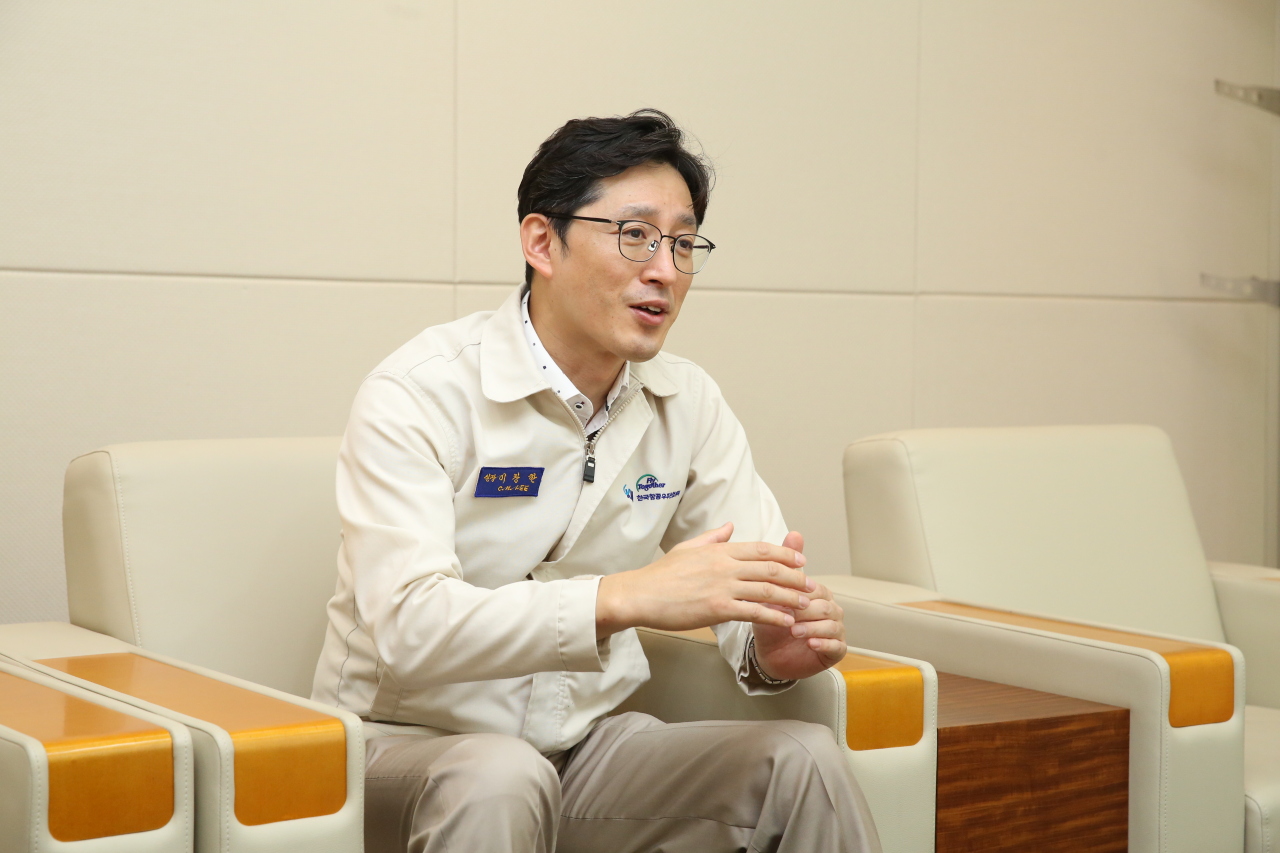[Herald Interview] Homegrown rocket may be ticket to join new space order
KAI executive overseeing Nuri project on what October success means for Korea
By Kim Byung-wookPublished : Sept. 12, 2021 - 17:48

This is the first installment in a series of interviews with executives of Korean companies with space ambitions. -- Ed.
In 2013, South Korea celebrated the launch of its first rocket -- the “Naro” Korea Space Launch Vehicle 1 -- from its own soil. The country’s first spaceflight success was, however, an effort that largely relied on Russian experts.
Eight years later and amid an intensifying space race among superpowers, the country will attempt to launch a truly homemade rocket next month -- the “Nuri” Korea Space Launch Vehicle 2 -- from the Naro Space Center in Goheung, South Jeolla Province.
From its design to assembly, Nuri is an all-Korean endeavor. And if all goes as planned on Oct. 21, it will give the country the much-needed admission ticket to a new space order, according to Lee Chang-han, a Korea Aerospace Industries executive overseeing the project.
“Superpowers are sending their probes and astronauts to the moon and Mars. Why? So they can set their own rules and control resources there,” said the director of the space business department at KAI, from his office in Seoul in a recent interview. “If Korea can’t get there with its own rocket, it will lose all the opportunities in space.”
His company is Korea’s sole aircraft builder, with accumulated know-how in assembling fighter jets, including the latest KF-21 Borame, and developing the country’s first homegrown utility helicopter Surion. The private firm has orchestrated the assembly and system integration of Nuri, leading the 2 trillion-won ($1.71 billion) project.
He said major players are burning cash for lunar explorations for a good reason. The moon is a gateway to outer space, and the US is currently salivating over the moon’s south pole, where an abundance of ice can be turned into water and oxygen, basic requirements to set up a base camp.
Among major regional economies, Korea is the only country without a homemade rocket, he pointed out.
Even if Korea advances its satellite capabilities to a level unmatched by anyone else, it will still have to rely on countries like Russia or the US to put them into orbit.
Lee shared his recent experience in order to emphasize the need for self-reliance, even if it may cost up to three times more than getting a SpaceX booster.
“KAI’s midsized satellite, which is scheduled to be launched by a Russian rocket … inside Kazakhstan next year, drew a lot of questions from the US authorities. We had to meet with a high-ranking US official to sort things out.”
Since March, the US has imposed a series of sanctions against Russia in response to the alleged poisoning and subsequent imprisonment of Russian opposition politician Alexei Navalny. The new sanctions included commercial space launches, he explained.
“If the price of a European rocket is 100, a Russian rocket is 70 and a SpaceX rocket is 50. A Korean-made rocket is about 150. But without a rocket of our own, Korea will have to use one made by either Russia or the US, and depending on political circumstances, the country’s satellite launch might be unavailable,” Lee said.
A successful Nuri launch would be a major milestone for South Korea’s space program, following the much-hailed May 21 termination of the decades-old Korea-US missile guidelines that limited Korea’s efforts to develop space launch vehicles.
A 200-ton, three-stage rocket, Nuri completed a wet dress rehearsal on the launch pad of the Naro Space Center on Aug. 26 to verify whether its systems function properly in extreme temperatures of around minus 183 degrees Celsius.
Assembling roughly 270,000 parts supplied by some 300 domestic companies was no easy task, but it was not an impossible one, Lee said.
What troubled KAI most was Nuri’s design.
“When the Korea Aerospace Research Institute designed Nuri and its parts, the government-funded research body didn’t consider the mass production of the rocket. The main focus was on launching it successfully,” Lee said.
As Nuri wasn’t designed for mass production and automation, KAI engineers had to assemble the parts manually, and they were constantly stressed by the fear that even the slightest mistake could compromise the whole mission.
“Even a small part required about 2,000 bolts. The bolts had to be double, triple checked one by one by engineers, so it was really exhausting,” Lee said.
The rocket is currently on the tarmac undergoing a paint job, which includes a South Korean flag. After some final checks, Nuri will be erected on the launchpad on Oct. 20, one day before the actual launch, Lee explained.
On the day of the October launch, Nuri will carry a 1.5-ton mock payload. Then on May 19, 2022, it is set to carry a 200-kilogram satellite and a 1.3-ton dummy payload.








![[Graphic News] More Koreans say they plan long-distance trips this year](http://res.heraldm.com/phpwas/restmb_idxmake.php?idx=644&simg=/content/image/2024/04/17/20240417050828_0.gif&u=)
![[KH Explains] Hyundai's full hybrid edge to pay off amid slow transition to pure EVs](http://res.heraldm.com/phpwas/restmb_idxmake.php?idx=644&simg=/content/image/2024/04/18/20240418050645_0.jpg&u=20240419100350)





![[From the Scene] Monks, Buddhists hail return of remains of Buddhas](http://res.heraldm.com/phpwas/restmb_idxmake.php?idx=652&simg=/content/image/2024/04/19/20240419050617_0.jpg&u=20240419175937)

![[KH Explains] Hyundai's full hybrid edge to pay off amid slow transition to pure EVs](http://res.heraldm.com/phpwas/restmb_idxmake.php?idx=652&simg=/content/image/2024/04/18/20240418050645_0.jpg&u=20240419100350)

![[Today’s K-pop] Illit drops debut single remix](http://res.heraldm.com/phpwas/restmb_idxmake.php?idx=642&simg=/content/image/2024/04/19/20240419050612_0.jpg&u=)